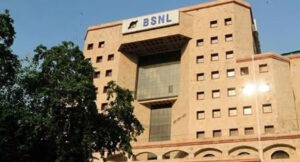Scindia stated that the SATCOM market in India is expected to double in the next couple of years. With three SATCOM licenses already issued, the Minister expressed optimism that the market will expand rapidly, potentially doubling in size over the next few years.
“The future of SATCOM is that the pathway is already put in place. The regulation is in process. The licensing regime is expected to be implemented soon. We’ve already issued three SATCOM licenses. I’m very confident that our market should double in the next couple of years,” said, outlining the promising trajectory of India’s satellite communications sector.
Scindia also highlighted India’s proactive approach in the global race for 6G technology.
Reflecting on India’s past absence in earlier telecom generations, he said, “India started as opposed to not having a seat at the table. This time, India has started early. We didn’t have a seat at the table at 4. We didn’t have a seat at the table at 5. But we are early movers as far as 6G is concerned.”He revealed that India is actively engaged in the “standard setting, protocol setting process at 6G with ITU,” with “two, three of our (proposals) have been accepted,” including the concept of a “ubiquitous network.” Scindia also mentioned that there are “seven verticals between the two lines,” and that a “separate Gantt chart for launch in terms of the progress” is being used to ensure coordinated contributions to these standards.
Although the timeline is governed by international bodies such as the ITU and STPB, he expects the 6G “standards and protocols” to be finalised by 2027-28, with execution — including equipment and chip manufacturing — slated for around 2030.
Addressing the potential of 6G technology, Scindia noted the “multifarious use cases” emerging, such as AI applications, holograms, and surgical processes.
However, he emphasised that “today is the time to talk about 5G use cases,” and promised that many of these will be showcased in upcoming exhibitions.
Answering the question on Broadband India Forum (BIF) suggestion to create a separate license category for satcom to the centre, he stated, “That’s something that’s going to be discussed by TRAI. That’s the regulator. So I don’t interfere with the regulator’s mandate.” NewKerala

